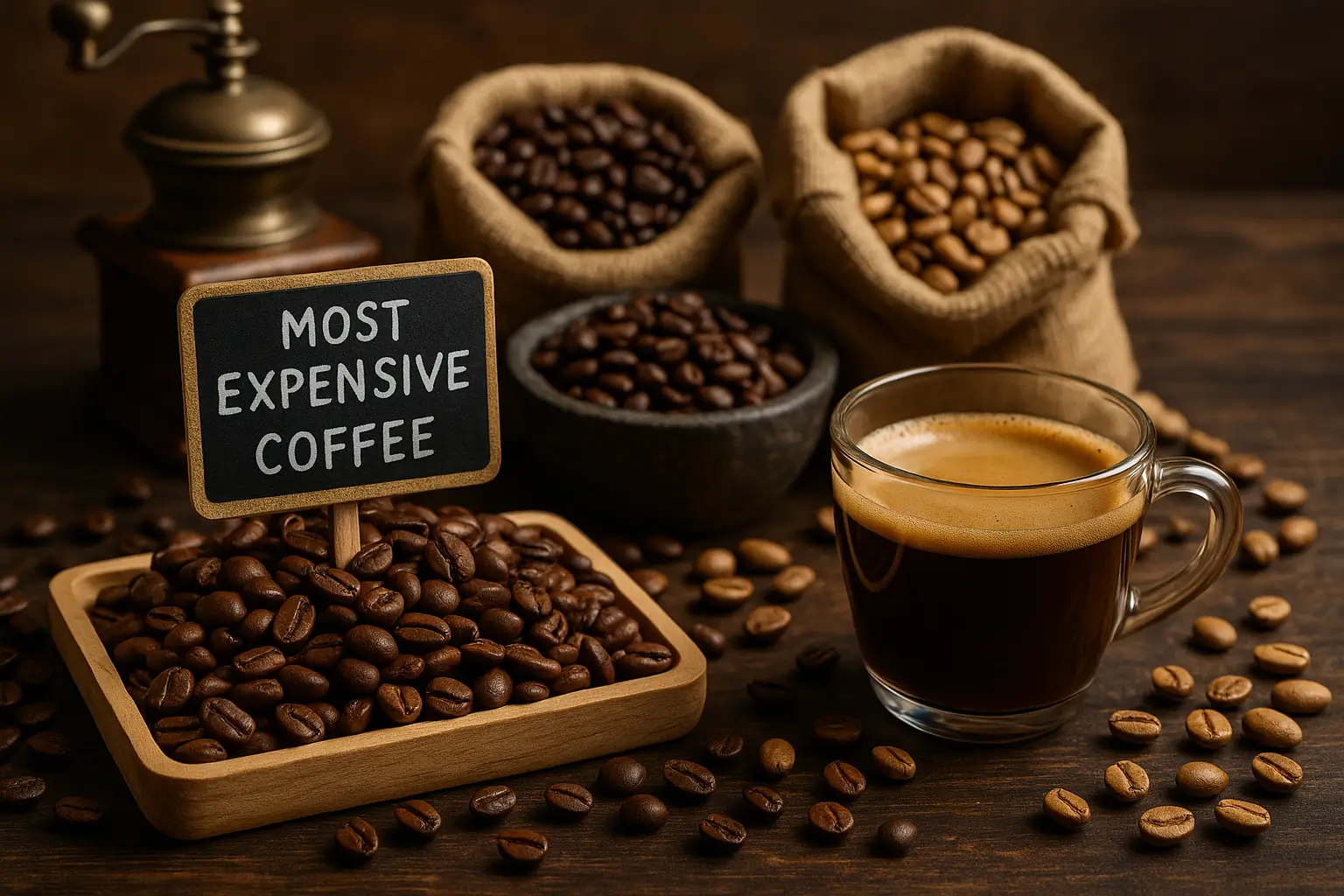For most people, coffee is a daily habit that costs a few dollars at most. But in the world of rare and specialty beans, some cups can fetch hundreds—even thousands—of dollars per pound. What makes these coffees so expensive? Is it taste, rarity, hype, or a combination of all three? In this article, we’ll explore the most expensive coffees in the world, why they cost so much, and whether they’re worth the price for true enthusiasts.
What Makes Coffee Expensive?
Several factors contribute to the high cost of premium or luxury coffees:
- Rarity: Limited production from specific regions or micro-lots.
- Processing method: Time-consuming or labor-intensive techniques like hand-picking or fermentation.
- Exotic origin or conditions: High-altitude farms, volcanic soil, or special microclimates.
- Unusual preparation: Some coffees involve animals or complex fermentation steps.
- Demand and hype: Scarcity often drives collectors and connoisseurs to pay more.
- Auction systems: Some of the world’s finest beans are sold at exclusive auctions.
Now let’s dive into the priciest coffees available today.
1. Kopi Luwak (Civet Coffee) – $100 to $600 per pound
Perhaps the most famous (and controversial) luxury coffee, Kopi Luwak is made from beans that have been eaten and excreted by a civet—a small, cat-like mammal.
Why It’s Expensive:
- The fermentation process in the civet’s digestive tract alters the flavor and reduces bitterness.
- Production is limited and labor-intensive.
Controversy:
Many civets are kept in captivity under poor conditions, which has led to widespread criticism. Ethical, wild-sourced Kopi Luwak is extremely rare and often expensive for that reason.
Flavor Profile:
Smooth, earthy, with low acidity and chocolate notes.
2. Black Ivory Coffee – $500 to $1,000+ per pound
Similar in concept to Kopi Luwak, Black Ivory Coffee is made from Thai Arabica beans consumed and naturally processed by elephants.
Why It’s Expensive:
- Elephants digest the beans slowly, removing bitterness and enhancing smoothness.
- Only small amounts are produced each year.
- Profits often support elephant rescue programs.
Flavor Profile:
Mellow, floral, with hints of chocolate and spice.
3. Hacienda La Esmeralda (Panama Geisha) – $300 to $3,000 per pound
This coffee from the highlands of Panama has won numerous international awards and is considered one of the finest examples of the Geisha variety.
Why It’s Expensive:
- Grown in micro-lots at high altitudes.
- Known for its rare floral and tea-like profile.
- Sold through competitive auctions with high international demand.
Flavor Profile:
Jasmine, bergamot, tropical fruit, and silky body—almost tea-like in delicacy.
4. Finca El Injerto (Guatemala) – $500+ per pound (auction lots)
This award-winning coffee farm produces small batches of high-quality beans that consistently place in the Cup of Excellence competitions.
Why It’s Expensive:
- Grown at high altitudes with careful cultivation and selective harvesting.
- Often roasted and sold by top-tier specialty roasters worldwide.
Flavor Profile:
Bright acidity, chocolate undertones, citrus, and complex sweetness.
5. Saint Helena Coffee – $80 to $150 per pound
Grown on a remote island in the South Atlantic Ocean, this coffee is steeped in history—it was a favorite of Napoleon Bonaparte, who was exiled there.
Why It’s Expensive:
- Logistically difficult and costly to produce and transport.
- Grown in volcanic soil, adding unique characteristics.
Flavor Profile:
Mild acidity, wine-like notes, floral, with a delicate balance.
6. Jamaican Blue Mountain – $50 to $100 per pound
This famous coffee is grown in the Blue Mountains of Jamaica and is known for its mild flavor and smooth body.
Why It’s Expensive:
- Strict grading and export standards.
- Limited production and high global demand (especially in Japan).
Flavor Profile:
Creamy, low acidity, balanced, with sweet herbal tones.
7. Hawaiian Kona Coffee – $40 to $80 per pound
Grown on the volcanic slopes of the Big Island, Kona coffee is prized for its gentle sweetness and balance.
Why It’s Expensive:
- Labor costs in Hawaii are high.
- True 100% Kona is rare—many blends include only small percentages.
Flavor Profile:
Smooth, nutty, with hints of chocolate and citrus.
Are These Coffees Worth the Price?
That depends on what you’re looking for.
Worth It If:
- You’re a collector or connoisseur.
- You enjoy exploring rare and unique flavor profiles.
- You value the story and process behind each cup.
- You’re attending a special event or giving a luxurious gift.
Maybe Not If:
- You just want caffeine and consistency.
- You’re on a budget.
- You can’t taste the difference between basic and specialty beans.
Tips for Trying Expensive Coffee Without Breaking the Bank
- Look for sampler boxes or small lots from specialty roasters.
- Attend coffee tasting events or expos.
- Try Geisha or Kona-style blends to experience similar profiles.
- Visit high-end cafés offering limited-batch pours by the cup.
Final Thoughts: Sipping Luxury, One Cup at a Time
Expensive coffee is about more than price—it’s about rarity, craftsmanship, and the journey from seed to cup. Whether you choose to indulge in a $10 pour-over or simply admire these beans from afar, one thing is certain: coffee has evolved from a commodity to a true gourmet experience.
